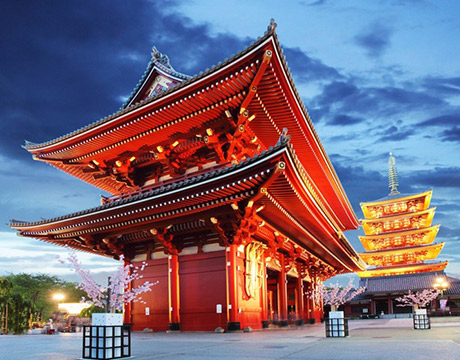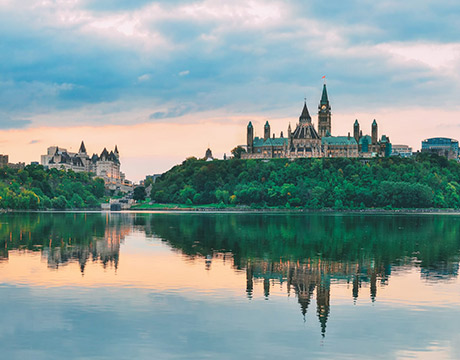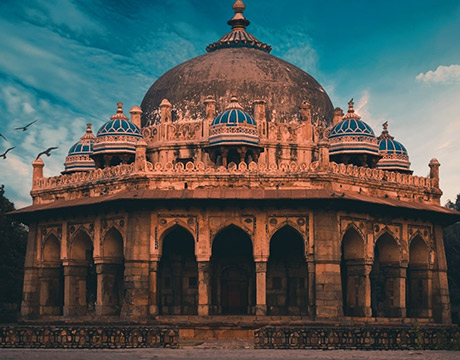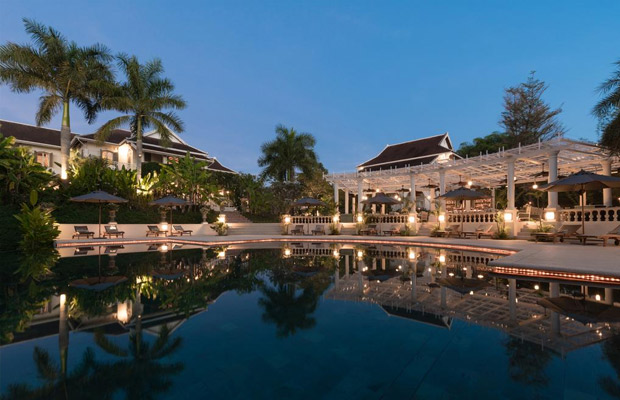Phra Bang (Haw Pha Bang)
Phra Bang (Haw Pha Bang)
Laos
Luang Prabang
Luang Prabang Travel Guide
Book Tour & Activities
Your tour in Luang Prabang.
Book your stay
Your hotel in Luang Prabang.
Overview
On the grounds of the Royal Palace Museum is the Haw Pha Bang, one of Luang Prabang’s most attractive monuments. A very ornate temple, the Haw Pha Bang which translates to “Royal temple” is also known as the Wat Ho Pha Bang. It was built to house Laos’ most sacred Buddha image.
Although the temple appears old at first glance, it is a fairly new structure completed in 2006, built in traditional Laos style. Construction of the temple started in 1963. The works were halted when the communist Pathet Lao party came to power and resumed in the 1990’s.
The Phra Bang ("Royal Buddha Image in the Dispelling Fear mudra)," Lao (ພະ + ບາງ) is the palladium of Laos. The Lao-language name for the image has been transliterated in a number of ways, including "Pra Bang," "Prabang," "Phabang" and "Pha Bang." The statue is an 83 cm-high standing Buddha with palms facing forward, cast using thong, an alloy of bronze, gold, and silver. According to local lore, it was cast in Ceylon (now Sri Lanka) sometime between the 1st and 9th century. However, the features of the image suggest a much later Khmer origin.
The Phra Bang arrived in Lan Xang during the reign of Fa Ngum from Angkor, and was used to spread Theravada Buddhism in the new kingdom. In 1359 the Khmer king gave the Phra Bang to his son-in-law, the first Lang Xang monarch Fa Ngum (1353-1373); to provide Buddhist legitimacy both to Fa Ngum's rule and by extension to the sovereignty of Laos. The former Lao capital Luang Prabang, where it was kept, is named after the Buddha image.
The Phra Bang has long been seen by devout Buddhists as a symbol of the right to rule Laos, as only a commendable and virtuous government deserves to be caretaker of such a sacred image. In 1778, the Siamese (now Thai) invaded Viang Chan and captured the Phra Bang, taking it back to Bangkok. There, political upheaval and misfortune were attributed to the Phra Bang, and in 1782 it was returned to the Lao people. Again in 1828, the Siamese captured the Phra Bang but again returned it in 1867 after a similar period of political upheaval.
In 2013 the Prabang Buddha was moved from the National Museum and brought to Haw Pha Ban on the Royal Palace grounds. Each year, on the third day of "Pimai" or Lao New Year, the Phra Bang is taken in procession to Wat Mai. There it is exhibited at a shrine where the Buddha image is ritually bathed by devout laypeople during Lao New Year festivities.
The Royal temple
The very ornate structure with extensive glass and gold decoration is set on a multi level raised platform. Its multi tiered roof is adorned with stylized Naga finials at the roof’s ends. At the center top of the roof is a “Dok so faa”, an ornamental element consisting of 17 spires found on many Laos temples. The very ornate wooden front façade is carved with Buddhist depictions in green and gold colors. Stairways with multi headed mythological Naga serpents lead to the entrance, the body of the snake extending all across the balustrades.
Inside the Haw Pha Bang is a large, very elaborate gilded alter where the Phra Bang Buddha image is to be enshrined.
Phra Bang Buddha image
The Haw Pha Bang temple was built to enshrine the Phra Bang Buddha, the most highly revered Buddha image in the country. The image after which the town of Luang Prabang is named is now housed in a richly ornamented shrine in the Royal Palace Museum.
The 83 centimeter tall Phra Bang image is in the Abhaya mudra, representing dispelling of fear. According to Laos legend the image was made in Sri Lanka almost 2,000 years ago. Judging from its style, it likely dates from the 14th century. The Phra Bang image was given to Fa Ngum, the first ruler of the Lan Xang Kingdom in 1353 by the King of Angkor. On two occasions during the following centuries the image was taken to Thailand by Siamese invaders. In 1867 it was returned to Laos, after which it was housed in the Wat Wisunalat and the Wat Mai.
Currently the image is kept in a richly ornamented shrine in the Royal Palace Museum, soon to be enshrined in the Haw Pha Bang temple. As part of the Laos new year celebrations the image is carried in procession to the Wat Mai temple where it is ritually cleansed.
How to get to the Haw Pha Bang
The temple is located in the South East corner of the Royal Palace complex on Sisavangvong road. Since distances are small, most of the town can be reached on foot. A tuk tuk or jumbo ride in the center of town will cost between 10,000 Kip (about US$ 1.30) and 15,000 Kip (about US$ 2), depending on distance and bargaining skills.
Opening hours
The Haw Pha Bang opens daily except Tuesday from 8 am until 11:30 am and from 1:30 pm until 4 pm.
Entrance fee
The Haw Pha Bang is located on the grounds of the Royal Palace Museum on the Luang Prabang peninsula. Admission to the temple is included in the Royal Palace Museum ticket.
The Phra Bang, Luang Prabang
- In between Royal Palace and Phousi Hill
- Address: Sisavangvong Road, Luang Prabang, Laos
- Date Completed: 2006
- Location: On the Royal Palace complex on Sisavangvong road
- Luang Prabang
Video Travel Inspiration
See Phra Bang (Haw Pha Bang) on Map
Most Popular Cities

Siem Reap
Cambodia
Ho Chi Minh City
Vietnam
Beijing
China
Paris
France
London
United Kingdom
New York
USA
Tokyo
Japan
Bangkok
Thailand
Seoul
South Korea
Vientiane
Laos
Yangon
Myanmar
Washington DC
USA
Los Angeles
USA
Ottawa
Canada
New Delhi
India
Singapore
Singapore
Kuala Lumpur
Malaysia
 English
English French
French Khmer
Khmer Thai
Thai Vietnamese
Vietnamese Chinese
Chinese Korean
Korean German
German Japanese
Japanese Italian
Italian Russian
Russian Spanish
Spanish Dutch
Dutch Indonesian
Indonesian Malay
Malay





































